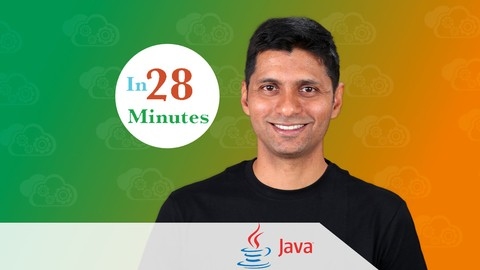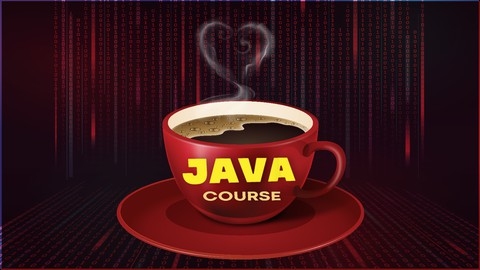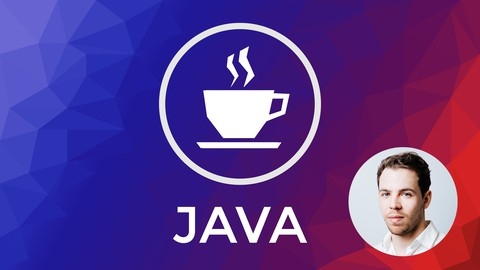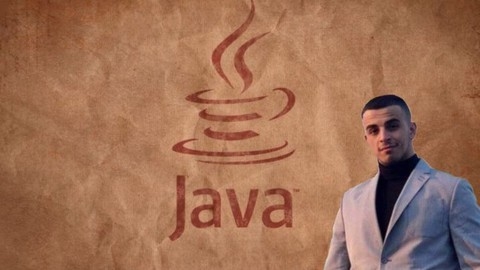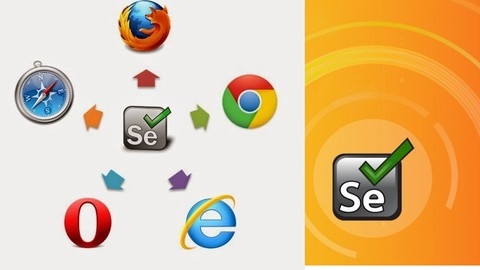Java, a versatile and widely-used programming language, powers everything from mobile apps and web applications to enterprise software and big data solutions.
Learning Java opens doors to a world of opportunities in software development, making it a valuable skill for both beginners and experienced programmers.
By mastering Java, you can build robust, scalable, and high-performing applications, making a real impact in the tech world.
Finding the perfect Java course for beginners on Udemy can be challenging, given the sheer number of options available.
You’re looking for a course that not only covers the fundamentals but also provides practical exercises, engaging projects, and clear explanations to solidify your understanding.
You want a course that sets you up for success, giving you the confidence to tackle real-world Java development challenges.
For the best Java course for beginners overall on Udemy, we recommend Java Programming for Complete Beginners.
This comprehensive course covers everything from setting up your development environment to mastering object-oriented programming principles.
With clear explanations, hands-on exercises, and engaging projects, it provides a solid foundation for your Java journey.
While Java Programming for Complete Beginners is our top pick, we understand that different learners have different needs.
That’s why we’ve compiled a list of other excellent Java courses on Udemy, catering to various learning styles and preferences.
Keep reading to discover the perfect Java course for your beginner journey.
Java Programming for Complete Beginners
The course starts by introducing you to Java programming and guiding you through the installation process for different operating systems like Windows, Mac, and Linux.
It covers troubleshooting tips to ensure a smooth setup.
You’ll then dive into Java programming by solving the Multiplication Table challenge using JShell, an interactive tool for learning Java.
This hands-on approach helps you understand Java expressions, printing output, variables, and basic programming concepts like conditionals and loops.
As you progress, you’ll learn about Java methods, including arguments, parameters, and return values.
You’ll also explore the Java platform, covering topics like Java classes, objects, JDK, JRE, and JVM.
The course integrates Eclipse, a popular Java IDE, to help you create and debug Java projects more efficiently.
The syllabus covers essential programming concepts like object-oriented programming (OOP), inheritance, abstraction, polymorphism, and encapsulation through practical examples and exercises.
You’ll learn to design classes, work with objects, and understand the relationships between them.
The course dives deep into Java’s primitive and reference data types, including integers, floating-point numbers, booleans, characters, strings, and wrapper classes.
You’ll also learn about collections like lists, sets, queues, and maps, which are crucial for managing and manipulating data.
Functional programming in Java is introduced, covering lambda expressions, streams, and operations like filter, map, and reduce.
You’ll learn how to write more concise and expressive code using these concepts.
Multithreading and concurrency are covered, enabling you to write efficient and responsive applications.
You’ll explore thread creation, synchronization, and the Executor Service for managing threads.
Exception handling is another essential topic, teaching you how to handle and throw exceptions gracefully, ensuring your applications are robust and maintainable.
The course also covers working with files and directories, as well as advanced concurrency topics like concurrent collections and atomic operations.
Throughout the course, you’ll work on numerous coding exercises and projects, reinforcing your understanding of Java programming concepts.
The exercises range from simple tasks to more complex problems, gradually increasing in difficulty.
Additionally, the course introduces you to Java’s new features from versions 10 to 16, including modularization, new APIs, and language enhancements like local variable type inference and switch expressions.
The syllabus also covers popular frameworks and tools like Spring Framework, Spring Boot, JUnit for unit testing, and Maven for build automation and dependency management.
Java Programming for Complete Beginners
The course starts by guiding you through setting up the essential tools like the JDK and Eclipse IDE, ensuring you have the proper environment for coding.
From there, you’ll dive into the fundamentals with “Hello World” and learn about variables, strings, loops, and conditional statements through hands-on lectures and quizzes.
This lays a solid foundation before moving on to more advanced concepts like user input, arrays, classes, objects, and methods.
The course covers key object-oriented programming principles like inheritance, polymorphism, and encapsulation.
You’ll also explore packages, constructors, static and final keywords, providing a comprehensive understanding of Java’s core features.
But it doesn’t stop at the basics.
You’ll learn file handling with the Scanner class, working with strings using StringBuilder, and implementing the equals method.
The ternary operator is also covered, giving you a concise way to write conditional expressions.
To solidify your learning, you’ll build a “Guess The Word” game project, applying the concepts you’ve learned in a practical way.
This hands-on experience is invaluable for reinforcing your skills.
The second part dives deeper into advanced topics like exception handling, abstract classes, inner classes, lambda expressions, enums, and serialization.
You’ll also learn about essential data structures like ArrayLists, LinkedLists, HashMaps, and various Set implementations.
Multithreading is a crucial aspect covered in-depth, including starting threads, using the volatile and synchronized keywords, thread pools, CountDownLatch, wait and notify, re-entrant locks, and semaphores.
Keeping up with the latest Java features, the course covers switch expressions, the var keyword, text blocks, sealed classes, record classes, virtual threads, and more from Java 10 to Java 21.
To solidify your learning, you’ll tackle coding exercises covering various topics like counting even numbers, student exam scores, polymorphism, grades, age verification, shopping lists and carts, voting systems, movie rating systems, and synchronizing threads with bank accounts.
Spring MVC For Beginners - Build Java Web App in 25 Steps
You’ll start this journey by creating a basic Java web application with JSP and Servlets.
This sets a strong foundation, teaching you how to use Maven for project setup, understand how servlets handle web requests, and build your first login servlet.
You’ll work with both GET and POST requests, passing parameters and adding password fields, giving you a solid grasp of core Java web development.
You’ll also learn how to troubleshoot your web application.
You then move into Spring MVC, a powerful framework that simplifies building web applications.
You’ll set up your Spring MVC project, create your first controller, and learn how ViewResolvers work.
The course explores Spring MVC’s architecture, encouraging you to experiment and learn by breaking things.
You’ll use Log4j to track what’s happening in your application and leverage ModelMap and @RequestParam for managing data within your application.
From there, you’ll delve into advanced Spring concepts like dependency injection and autowiring, building a to-do list application to practice these skills.
You’ll manage session data with @SessionAttributes, implement features to add, delete, and update to-do items, and learn how to use JSTL tags to create dynamic web pages.
You’ll even use Bootstrap to style your application, making it look professional.
The syllabus also covers HTML5 validations.
You’ll use Hibernate Validator to ensure your data is correct.
You’ll also learn how to build a navigation bar with JSP fragments.
The course then moves into security aspects, teaching you how to use Spring Security for authentication and authorization.
You’ll implement login and logout features, understand and apply exception handling for robust error management, and learn how to make your application work in different languages (internationalization).
You even get an introduction to building RESTful web services with Spring, using @PathParam to handle path parameters.
You will leave the course with a practical, hands-on understanding of tools and technologies like Tomcat, JEE, and Spring REST web services, allowing you to build real-world web applications.
Java for Absolute Beginners
You’ll begin this Java journey by setting up your programming environment with IntelliJ IDEA and creating your first project.
You’ll write your first program, “HelloWorld,” learning to display messages and format text.
You’ll then explore variables—int, double, char, boolean, and String—learning how to manipulate them and use type casting.
You’ll use the Scanner class to get user input, creating interactive programs with System.out.format().
You’ll then dive into conditional statements (if, else if, else, switch) and loops (while, for, do-while), essential for controlling program flow.
You’ll work with arrays, learning to store and manipulate data, using adaptive iteration and the foreach loop.
You’ll then explore methods (functions), learning to pass and return data, improving code structure.
Coding challenges reinforce your understanding throughout these sections.
For example, after learning about user input, you’ll tackle a challenge that tests your ability to read and process input effectively.
Next, you’ll discover object-oriented programming (OOP).
You’ll learn about encapsulation, inheritance, and polymorphism.
You’ll work with ArrayLists, exploring how to manage collections of objects and build a library application that manages books by their ISBN numbers.
You’ll also learn about constructors and composition, building towards a comprehensive understanding of object interactions.
The “Bank Account” project solidifies your understanding of inheritance and polymorphism, demonstrating how to create flexible and reusable code.
The course provides numerous exercises and solutions, along with walk-throughs of programs like Tic-Tac-Toe and Prime Numbers.
These practical examples showcase the power of System.out.println() and System.out.format() for outputting information effectively, enhancing your understanding of core Java principles.
Java Course for Complete Beginners with Practical Examples
You’ll begin by setting up your coding environment with IntelliJ IDEA and the Java Development Kit (JDK), whether you’re on Windows, macOS, or Linux.
You’ll then dive into the basics: variables, data types like integers and strings, and operators for performing calculations.
You’ll write your first Java program and learn how code gets built.
Coding exercises will solidify your grasp of loops (for, while, do-while), control flow (if-else statements), and how to write reusable code blocks using methods.
You’ll also learn about arrays for storing collections of data.
You’ll then move on to Object-Oriented Programming (OOP), where you’ll work with classes and objects, using access modifiers to control how different parts of your code interact.
You’ll discover the four pillars of OOP: inheritance, encapsulation, abstraction, and polymorphism.
You’ll work with keywords like final and static and learn best practices for clean, efficient code (DRY, KISS, YAGNI).
These principles will help you organize and structure larger Java programs.
Next, you’ll delve into more advanced Java features.
You’ll learn about collections like ArrayList, LinkedList, HashMap, and HashSet to manage groups of objects.
Generics will help make your code more flexible, and you’ll master handling exceptions so your programs don’t crash when things go wrong.
You’ll work with files using classes like FileReader and FileWriter.
You’ll even build a Hangman game to put your knowledge into practice.
You’ll get comfortable with System.in, System.out, Scanner class, Math functions, StringBuilder, and StringBuffer.
This course also covers expert-level concepts like streams and lambda expressions, powerful tools for processing data efficiently.
You’ll learn about functional programming and use functions like filter, map, and collect.
You’ll explore multithreading, which allows your programs to perform multiple tasks simultaneously.
You’ll work with the Thread class and Runnable interface.
Finally, you’ll learn how to use Optional to handle missing values safely.
The hero level even covers more advanced concepts like multithreading and security, which are frequently updated, keeping you on the cutting edge.
Java for Beginners - Learn all the Basics of Java
This Java course takes you on a clear path from beginner to confident coder.
You’ll begin with the very basics: understanding what Java is and setting up your coding environment.
You’ll quickly jump into writing your first lines of code, discovering data types (like numbers and text) and using variables to store information.
You’ll even learn how to get user input using the Scanner method, making your programs interactive.
You’ll then explore core programming concepts like operators (for math and logic) and if statements (for making decisions in your code).
You’ll put these concepts into practice by building a car selector program, applying what you’ve learned in a fun, hands-on way.
The course then introduces loops, which let you repeat code, and you’ll use them to create projects like a car color finder and a GPA converter.
These exercises will strengthen your problem-solving abilities and coding logic.
Finally, you’ll dive into more advanced topics.
You’ll learn about lists and maps, which are essential for organizing and managing data in your programs.
The course wraps up with a multi-part final project focused on classes and objects – the core of object-oriented programming.
This project will give you a chance to build something substantial and apply everything you’ve learned.
You’ll gain practical experience and a project to show off your new Java skills.
Selenium WebDriver JAVA |Best for Beginners |Real Frameworks
This course takes you on a journey from Java basics to advanced test automation.
You’ll begin by setting up your Java programming environment with JDK and Eclipse on your Windows machine.
You’ll then learn core Java concepts: variables, constants, classes, methods, and constructors.
You’ll practice with exercises involving mathematical calculations and string manipulation, and learn about different types of loops (for, while, do-while) and how to work with arrays.
You’ll even learn how to take user input at runtime, adding interactivity to your Java programs.
You’ll then move into more specialized Java topics.
You’ll learn how to handle files (reading and writing data to TXT and CSV files), explore object-oriented programming principles (encapsulation, inheritance, polymorphism, abstraction), and discover new features introduced in Java 8, like lambda expressions.
You’ll understand database connectivity using SQL, work with Excel files using Apache POI, and learn about access modifiers (public, private, protected).
You’ll also become familiar with JUnit and TestNG, two popular testing frameworks in Java.
With a solid Java foundation, you’ll transition into Selenium WebDriver for web automation.
You’ll learn to locate elements on web pages using various techniques, including ID, Name, Class, CSS selectors, and XPath.
You’ll handle browser actions, manage waits, and work with different web elements like text boxes, buttons, dropdowns, and lists.
The course teaches you to build robust testing frameworks using the Page Object Model (POM) and generate reports using ReportNG.
You’ll also integrate your projects with Maven for dependency management, Git for version control on GitHub, and Jenkins for continuous integration.
You’ll explore additional test automation tools and frameworks.
You’ll learn about the Robot Framework for keyword-driven testing, Katalon Studio for a codeless approach, and Rest-Assured for API testing with JSON.
You’ll even get an introduction to Behavior Driven Development (BDD) using Gherkin and Cucumber.
The course covers advanced topics like exception handling, WebDriver listeners, working with multiple browser windows, and using JavaScriptExecutor.
You’ll also learn how to create a data-driven framework, pulling data from external sources like Excel files, to power your tests.
Java Enterprise Edition 8 for Beginners course
If you’re looking to dive into the world of Java Enterprise Edition (Java EE), this beginner’s course is a great starting point.
You’ll begin with the fundamentals, understanding what Java EE is, the role of application servers like Payara Micro, and the importance of Java Specification Requests (JSRs).
You’ll even explore the relationship between Java EE, its successor Jakarta EE, and the popular Spring Framework.
The course sets you up with essential tools like the JDK, NetBeans or Eclipse IDE, Git for version control, and Apache Maven for project management.
You’ll quickly jump into hands-on learning, starting with a simple “Hello World” application.
Then you’ll build a practical to-do list app, introducing you to core Java EE technologies.
You’ll use the Java Persistence API (JPA) to manage data, create RESTful web services with JAX-RS, and implement data validation with Bean Validation.
You’ll also learn how to package and deploy your application using Payara Micro.
This course goes deep into Contexts and Dependency Injection (CDI), a powerful framework for managing application components.
You’ll explore dependency injection, lifecycle contexts, interceptors, events, and CDI producers.
You’ll learn how to use different CDI scopes (request, session, application) to control the lifespan of your application objects.
This knowledge is essential for building robust and scalable Java EE applications.
You’ll master the Java Persistence API (JPA), learning how to interact with databases effectively.
You’ll cover entity relationships, different mapping strategies, and how to write database queries using JPQL.
The course also teaches you about Enterprise JavaBeans (EJBs), which provide important services like transaction management.
You’ll learn the different types of EJBs and how they contribute to application architecture.
This course thoroughly covers JAX-RS, enabling you to build sophisticated RESTful web services.
You’ll learn how to handle various HTTP methods, manage different content types, work with path and query parameters, and implement robust error handling.
You’ll explore advanced JAX-RS concepts like filters, security using JWT (JSON Web Tokens) for authentication, asynchronous processing, and even WebSockets for real-time communication.
You’ll also learn how to deploy your applications using Docker and test them thoroughly with Arquillian.
Finally, a capstone project allows you to apply everything you’ve learned by building a secure to-do list application, complete with user authentication and data persistence.

